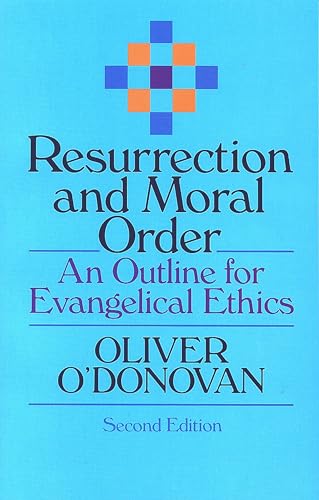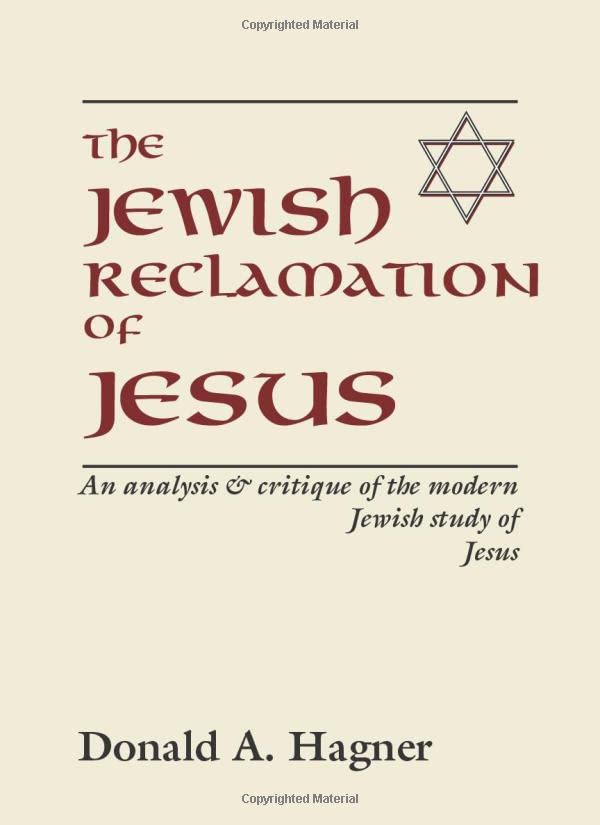Alternative Approaches to New Testament Study
Written by A. E. Harvey (ed.) Reviewed By Max TurnerThe book consists of seven unintegrated essays. M. Goulder, ‘A House Built on Sand’, offers a pugnacious rejection of critical orthodoxy on the question of gospel origins. He makes merry of the arguments for Q in particular, and more generally of the methods by which scholars seek to identify which words of a passage come from a source, and which from the evangelist. For example, he only has to show that many so-called Matthaeanisms are actually also there in Q—albeit less frequently (but then Q is a shorter corpus than Mt.)—in order to throw doubt both on the word-count method of redaction/ source analysis so often practised, and even on the existence of Q itself. (This is further thrown in question by the demonstration that many of the traits of the third gospel normally regarded as evidence that Luke has preserved a more authentic version of a Q saying than Matthew’s parallel can better be interpreted as Lucanisms!)
While some of his points are well made, others are less convincing. For example the agreement between (e.g.) Mt. 26:67f. and Lk. 22:63f. against Mk. 14:65 is said to falsify the Q hypothesis (because here one cannot invoke Q, which ex hypothesi had no passion narrative; one must assume Luke used Matthew, in which case that explanation satisfies all other agreements of Matthew and Luke against Mark and makes Q redundant). If we are tempted to answer (quite reasonably) that Luke may have shared other traditions with Matthew than merely Q, Goulder objects (a) that we are making our original thesis unfalsifiable, and so meaningless, and (b) we are multiplying unnecessary hypotheses. The ‘easiest’ explanation is that the Q and M material in Matthew is the evangelist’s own creation, and that Luke freely rewrote Matthew and Mark, in turn creating virtually all the so-called L material (including e.g. parables of the Good Samaritan, Prodigal Son, etc.). The trouble is that many of us traditionalists (and that includes other writers in the volume) need to be shown that Goulder’s simpler hypothesis (we agree it is simpler numerically, in that it posits fewer sources and traditions; but that is probably irrelevant) is also the more historically believable: and we still find it wildly improbable that Luke knew and used Matthew. The old wine of the traditional answer to the synoptic problem may need maturing yet; but it still tastes better than the new.
John Drury, ‘Mark 1:1–15: An Interpretation’, attempts to give a structuralist analysis of the passage to elucidate the early church concerns which provide the dynamic and the shape of this section. Unfortunately the essay does not provide a clear elucidation of structuralist method of analysis, and so the exegetical results are not firmly based in it. Nor does Drury seem to have achieved thereby insights into the passage which he could not better have deduced by tradition and redaction criticism: indeed in contrast to them his structuralist analysis appears impressionistic and undisciplined. The method may have been creative in offering suggestive possibilities, but these needed to be pinned down properly through textlinguistics (in the literary dimension) and tradition and redaction criticism (in the historical).
John Riches and Alan Millar, ‘Conceptual Change in the Synoptic Tradition’, begin with a commonplace of linguistic philosophy (even more so of Semantics and Pragmatics), namely that determination of the sense of an expression in a discourse involves identifying a whole collection of related theological presuppositions and entailments which are themselves historically and sociologically conditioned. Using the example of ‘the kingdom of God’, the authors show that one cannot understand what Jesus means by this expression on purely linguistic grounds, or merely on the basis of formal analogies with statements about the kingdom in other literature (Weiss and Chilton), but must also take into account what Jesus considered his proclamation to entail for ethics, in relation to purity laws, etc. What Jesus meant by ‘the kingdom of God’ can only be known when its entailments are known. More semantic precision may be required, but this is a good essay in the use and abuse of parallels, and should be recommended reading for students.
J. D. Derrett offers an original essay on ‘Taking up the Cross and Turning the Cheek’ which is refreshing, if hardly methodologically rigorous, but this reader is not quite sure in what sense it commends itself as a strictly alternative approach to the NT.
If much modern NT scholarship offers theological abstractions barely grounded in the social realities of the NT world, others have rightly rebelled, and amongst their number must be included not only Riches (above) but also A. E. Harvey and F. G. Downing. Harvey’s essay, ‘Forty Strokes Save One: Social Aspects of Judaizing and Apostasy’, examines the social and legal pressures that would come upon a Jew who converted to Christianity. He might not find it easy (or even desirable) to extricate himself from Judaism. But if he tried he would probably have to move district (or even country if he were Palestinian) to do so: it was not simply a matter of declaring himself an apostate! Judaism, for its part, would probably tolerate a wide range of opinions but might construe Christianity as blasphemous, and would certainly have taken very seriously the breach with purity laws required for Jewish Christians to have full fellowship with Gentile Christians. For that the heavy flogging Paul received five times (2 Cor. 11:24) might well be expected, and accepting the punishment would be the only way of staying within Judaism, e.g. to evangelize. From this (not entirely original) stance Harvey looks at the Antioch incident, Galatians, Hebrews, Matthew, and the Pauline mission, and attempts to elucidate the socio-historical situation of each. The right questions are asked, even if the evidence afforded us is thin, and capable of several interpretations.
F. G. Downing, ‘Ears to Hear’, focuses our attention on the fact that in antiquity authors produced their discourses in active discussion with their intended audiences (or samples thereof) who thereby had a direct influence on the shaping of the discourse. Downing also argues that, for example, Josephus’ speeches in part deliberately echo the sort of theological, moral and political interests in Dionysius of Halicarnassus because he knows that his audience has read and enjoyed Dionysius (and others like him). Luke shows something of the same proclivities, claims Downing (see NTS 27 and 28). This approach—which asks serious questions about how Luke’s or Mark’s selection of material is affected by audience expectations and preferences, and how the writer reacts with them—is entirely to be commended, even if we have to recognize the provisional nature of many of Downing’s own conclusions.
Finally, Leslie Houlden, ‘Trying to be a New Testament Theologian’, grapples agonizingly with the question of how so diverse a bundle of documents as the NT, so individualistic in theology, so contextually contingent, and so culturally removed from our situation, can be the basis of a theology for today. He is not willing, with Nineham, to saw off the academic branch he is sitting on and make study of the NT a merely antiquarian pursuit. He does see the NT as having an authority for theology that, say, Calvin’s Institutes cannot have; but precisely what the cash value of the affirmation is remains unclear. Is it enough to say (however well) that certain key features, like the conviction of Christ as living, the awareness of ‘salvation’ and the sense of a new, expectant community of God’s people, are the legacy of the NT to the theologian today who must simply make them the hub of his theological wheel and recognize that otherwise NT scholarship canonizes diversity and autonomy? And what does all this mean in practice? We are not told. Evangelical students will perhaps be inclined to a more positive evaluation of the underlying unity of the NT, and of its potential coherence for our world, and so find the whole problem less painful; but they will benefit from a sympathetic reading of the essay, and an attempt to elucidate their answer to the problems Houlden poses.
In the final analysis the title and preface promise more than the book fulfils. While not ungrateful for some of the contributions, the reader comes away disappointed. No new ground has really been broken; little use has been made of disciplines that offer genuine alternative approaches to NT questions.
Max Turner
London Bible College







